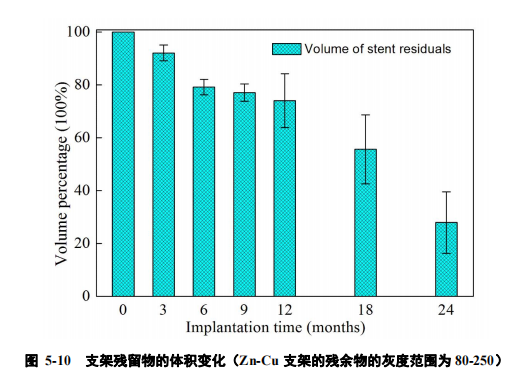
图 5-10 为 Zn-Cu 支架在猪冠脉内残留体积的变化。术后 3、6、9、12、18 和24 个月,锌铜支架的残留量分别为 92.08±0.65%、79.17±3.75%、77.08±4.13%、
74.06±12.01%、55.63±18.97%和 27.92±12.62%。在本研究中,锌铜支架在猪冠状动脉内植入的前 3 个月保持了原来的完整性,没有任何局部的腐蚀产物堆积。根据植
入 3 个月后剩余体积的 92.08±0.65%计算出的腐蚀速率约为 0.016 mm/y,这与 0.02mm/y 的理想降解速率接近[50],有研究者在 Sprague-Dawley 大鼠模型中也发现了类似的结果[51]。
Figure 5-10 shows the change in the residual volume of the Zn-Cu stent in the pig's coronary artery. At 3, 6, 9, 12, 18 and 24 months after surgery, the residual amount of zinc and copper stents were 92.08±0.65%, 79.17±3.75%, 77.08±4.13%,74.06±12.01%, 55.63±18.97% and 27.92±12.62%. In this study, the zinc-copper stent maintained its original integrity during the first 3 months of implantation in the porcine coronary artery without any local corrosion product accumulation. According to ZhiAfter 3 months, the calculated corrosion rate of 92.08±0.65% of the remaining volume is about 0.016 mm/y, which is close to the ideal degradation rate of 0.02 mm/y [50]. Some researchers have used the Sprague-Dawley rat model Similar results were also found [51].